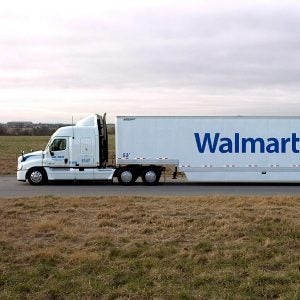Walmart Makes Progress on Its Sustainable Chemistry Policy
Boma Brown-West is a Manager, Consumer Health Corporate Partnerships Program and Jennifer McPartland, Ph.D., is a Senior Scientist with the Health Program
It’s been two and a half years since Walmart first committed to adopting a sustainable chemistry policy. Since then, consumers, companies and advocates have been watching the retailer with interest. Today, Walmart released its ninth annual Global Responsibility Report (GRR), which outlines its environmental and social activities for the past year. For the first time, this report includes information about the progress it has made against its Sustainable Chemistry Policy adopted in 2013, which aimed for more transparency of product ingredients and safer formulations of products.
According to Walmart, it has reduced the usage (by weight) of its designated high priority chemicals by 95 percent, a pretty sizeable number. Walmart has said that it will post more specifics in the coming weeks on its Sustainability Hub, including quantitative results on all aspects of the policy’s implementation guide and details about how they achieved the substantial reduction
 While this is a promising step in the right direction, the GRR doesn’t identify the high priority chemicals that have been reduced. It is difficult to fully appreciate Walmart’s accomplishments without knowing the names of these chemical targets. We expect that the names of the high priority chemicals will be revealed on the Sustainability Hub.
While this is a promising step in the right direction, the GRR doesn’t identify the high priority chemicals that have been reduced. It is difficult to fully appreciate Walmart’s accomplishments without knowing the names of these chemical targets. We expect that the names of the high priority chemicals will be revealed on the Sustainability Hub.
Walmart’s announcement marks the first time a major retailer has publicly measured and shared the progress it has made against its commitment on chemicals. This is especially important to EDF because we know through research and experience that shared stories about progress can prompt others to follow, to the benefit of public and environmental health.
We believe there are three key factors that have made Walmart’s progress possible: 1) the existence and use of a 3rd party-managed chemicals database that can generate quantitative, aggregate information about the chemicals on Walmart’s shelves, 2) a policy that prioritizes specific chemical targets, and 3) a time-bound business commitment to track and share progress publicly (in Walmart’s policy they committed to start sharing progress in 2016). We look forward to the day these practices reflect the business norm rather than the exception.
Market leadership will always have an important role to play alongside policy in driving safer chemicals and products into commerce. EDF looks forward to the additional details forthcoming on Walmart’s Sustainability Hub.
This blog is a cross-post from Behind the Label












